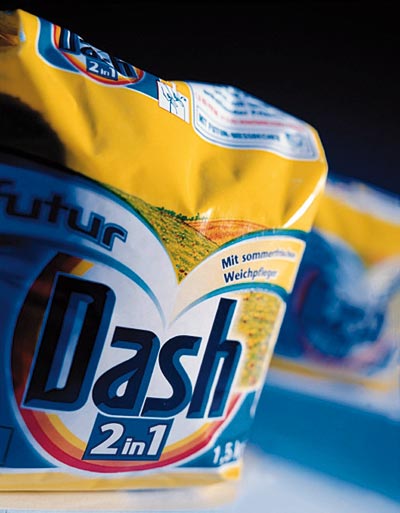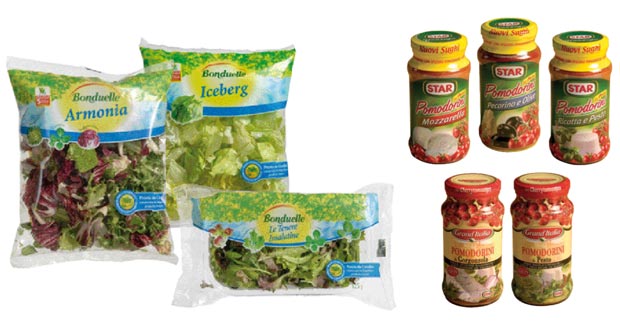Flexible converter packaging
DATA AND FACTS Multilayer coextruded or laminated, or monolayer, flexible packaging features as one of the few areas of the packaging sector showing progressive growth. Plinio Iascone

This packaging family has a complex multimaterial structure, consisting of cellulose, plastic, aluminium film or metalized layer, obtained by bonding, coextrusion or lamination. The combinations of different materials are made taking into account both the characteristics of the product to be packed as well as the shelf life to be ensured, thus defining the main strengths of this type of packaging. However the market also comprises monolayer packaging for less demanding uses in barrier terms.
Overall, flexible converters packaging is one of the few areas of the packaging industry which still shows an interesting, progressive growth trend (obviously this considering its lifecycle as a whole).
In the first stage this growth was achieved by essentially eroding shares of other types of packaging, while recently it has mainly featured inclusion in new areas: frozen or chilled ready meals, processed and packed convenience fruit and vegetables, pre-packaged and pre-weighed fresh food, fresh ichthyic products conveyed by aquaculture centers to the salespoint etc.
The market
2011 saw a domestic demand of 185,000 tons, an increase of 3.3% compared to 2010, and a particularly positive result in exports which are at 11%. The positive trend of both components of demand enabled end-of-year results with production showing a 6.7% increase. Hence from 2008 to 2011, even in the presence of two economic crises, the industry managed to put in a total annual average growth of 3%.
Exports represent an important component, amounting to 43.8% of production. This is nothing new: Italian flexible packaging manufacturers have always had a strong vocation towards exports, supported by undeniable strengths such as product quality and customer service, indeed some companies in the sector manage to export more than 70% of their output.

Imports are as ever limited, standing at between 1-2% of domestic consumption, but foreign competition, especially Turkish, is being felt (although, for the moment, particularly on foreign markets).
Observing the characteristics of this packaging family, it is important to note that in recent years converter polylaminates have gradually lightened in weight while offering unchanged performance. This process is the result of successful research activities aiming at identifying new materials and manufacturing techniques. This has resulted, among other things, in a reduction over the last few years of the cellulose component as well as in that of aluminium film, the latter often being replaced by resorting to metallization. More generally, this change has been made possible by the design of low plastic multilayer structures, which perform the functions previously carried out by cellulose or aluminium. According to the latest estimates, currently 80% of flexible converter polylaminates consist of structures of plastic alone, 15% comprise aluminium foil and 5% paper sheeting.
Fields of use
The food area remains the main market outlet for flexible polylaminate converter packaging, with a share of around 90.8% in 2011.
The high diffusion of this type of packaging in the food area derives from several factors, headed by the already mentioned growth of pre-weighed, pre-packaged food, usually in a protective atmosphere, of ready-to-cook or ready-to-eat dishes in protective atmosphere, and of fresh processed and packed convenience fruit and vegetable produce and the like.

The food area
In the food industry, with reference to sales in Italy, the two largest market shares of baked goods and pasta account for approximately 22.5%, dairy products (cheese, yogurt, butter, etc..) accounting for 17.2% of total use. Considering pasta, the largest quantities are accounted for by industrial pasta and ice cream. Fresh pasta has the highest growth rates, a record supported both by the growth in consumption of various types of fresh industrial pasta as well as the marketers’ orientation towards offering products packaged in protective atmosphere.
With regard to dairy products, the largest share of flexible converter polylaminates is absorbed by cheese proportioned and prepacked by producer companies or packaged directly in modern distribution.
In the food area flexible converter packaging is also used for packaging processed and cold cut meats, which have a share of 8.2% the use of which is growing steadily both in the manufacturing industries as at the largescale retail point of sale, as well as frozen foods that account for 7.2% of demand, followed by coffee (4%) and petfood (3.6%). In the later market, the use of flexible converter packaging is growing steadily, driven by the growth of the sector as a whole but also by the popularity of flexible packaging for both dry and humid products, to the detriment of other packaging solutions.
Lastly, the presence of flexible converter polylaminates in the food area is significant, and shows good potential for further growth, also for canned legumes, tomato derivates for the horeca chain, various creams and sauces and more. Currently (from our point of view) "other" food industry products total a share of 28.1%, ichthyic products from aquaculture centers destined for the salespoints accounting for a sizable amount.
Non-food
In non-food, the main field of application of this type of packaging is that of household detergents, with a share of 4.9%. Here flexible polylaminate packaging has good growth potential both due to the tendency to replace the cardboard box with the polylaminate bag as well as the progressive diffusion of washing additives in paste form.
The pharmaceutical and cosmetics-perfume sector is the second most important non-food market with a share of 4.3%. The positive trend in both areas also draws origin from the market’s progressive opting for single serve items, for the packaging of which essentially two alternatives are used: the converter polylaminate bag or the plastic flacon.
Summing up
To conclude, we can say that overall the growth potential of flexible converter laminates remains good. Several factors support their demand:
- The technical and commercial efficiency of producers in registering and transferring customer needs and demands onto the market;
- the limited bulk of this type of packaging;
- the ability to combine the performance of different materials comprising the same in a single packaging item;
- the coherence of the packaging industry and its strong orientation towards exports, supported by a significant competitive edge.
Plinio Iascone
Istituto Italiano Imballaggio




















